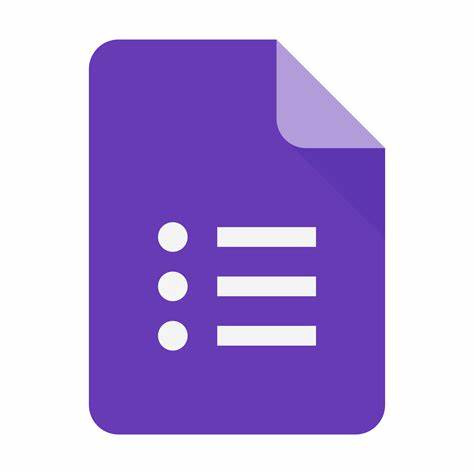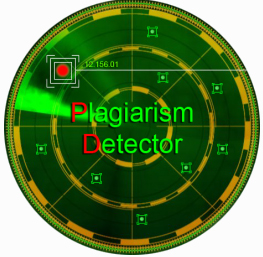DESIGNING ACADEMIC INFORMATION SYSTEM OF MADRASAH DINIYAH AL-IKHLAS WITH DESIGN THINGKING METHOD
Abstract
Information technology is a very important requirement for organizations and businesses. Technology can be utilized by many educational institutions as a force to face increasingly fierce competition in the modern era. So far, there are still many academic systems that still use conventional methods, that is, every data processing is recorded in a ledger, which often complicates the data search process. it requires more space and time, one of which is in madrasah diniyah al-ikhlas. Madrasah Diniyah Al-Ikhlas is a non-formal education which takes place in Brebes district which is usually used as a companion school for public schools. In the daily activities of Madrasah Diniyah Al-Ikhlas, in processing academic data, they still use manual recording. The learning activities of Madrasah Diniyah Al-Ikhlas are carried out during the day. In teacher learning activities, they still use large books such as class student data which are still written manually, absenteeism is still manually using attendance reports. The lesson schedule is still written on the wall and grades are still in the ledger kept in the classroom cupboard. while academic information is needed by students and parents. Currently Madrasah diniyah al-Ikhlas has not implemented an information system that can provide convenience in the process of managing academic data. Based on the problems found in Madrasah Diniyah Al-Ikhlas the authors designed a website-based academic information system, the method used in the design used the design thinking method. The Design Thinking method has a series of processes including Empathize, Define, Ideate, Prototype. System implementation uses the Laravel framework. This study aims to produce an Academic Information System that is able to overcome the difficulties experienced by madrasa teachers in managing academic data which is still manual at this time, so that it is useful to help Madrasah Diniyah al-Ikhlas actors in data processing in a relatively shorter time. User satisfaction testing was carried out using the System Usability Scale (SUS) method with a total of 31 respondents. The calculation results produce a value of 72.98387097 where it can be concluded that the system is in a good and acceptable category.
Full Text:
PDFReferences
M. A. Insani, “Perancangan Desain pada Aplikasi My School Menggunakan Metode Lean UX Designing The My School Application Using The Lean UX Method,” 2022.
H. M. Saputro, L. Ariyani, and A. Irawan, “Rancangan aplikasi sistem informasi akademik sekolah pada smp muttaqien jakarta berbasis java,” vol. 01, no. 04, pp. 483–489, 2020.
A. Syafiq, “Manajemen sistem informasi sebagai penyelenggaraan Akademik Madrasah Diniyah (Studi di Madrasah Diniyah Al-Hikam Malang),” 2022.
E. Nurelasari, “Perancangan Sistem Informasi Akademik Pada Sekolah Menengah Pertama Berbasis Web,” Komputika J. Sist. Komput., vol. 9, no. 1, pp. 67–73, 2020, doi: 10.34010/komputika.v9i1.2243.
F. Wiryandhani, S. Widodo, and R. Andrian, “Perancangan Purwarupa Dashboard Digital Untuk Pengukuran Produktivitas Kerja Dengan Metode Design Thiniking,” J. Teknoinfo, vol. 17, no. 1, p. 351, 2023, doi: 10.33365/jti.v17i1.2074.
H. Ilham, B. Wijayanto, and S. P. Rahayu, “Analysis and Design of User Interface/User Experience With the Design Thinking Method in the Academic Information System of Jenderal Soedirman University,” J. Tek. Inform., vol. 2, no. 1, pp. 17–26, 2021, doi: 10.20884/1.jutif.2021.2.1.30.
Y. N. Mukhandi, K. Suhada, and R. Gunawan, “Perancangan Aplikasi Penerimaan Calon Peserta Didik Baru Dengan Menggunakan Desain Thinking Pada SMK Perbankan Indonesia,” Pros. Semin. Nas. Inov. dan Adopsi Teknol., vol. 2, no. 1, pp. 170–181, 2022, doi: 10.35969/inotek.v2i1.248.
R. W. Naim and H. Fabroyir, “Desain dan Evaluasi Antarmuka Pengguna Aplikasi Web Responsif myITS Marketplace Berdasarkan Design Thinking,” vol. 10, no. 2, 2021.
F. A. Firdausi, “MARKETPLACE UMKM DIGIDESA MENGGUNAKAN METODE DESIGN THINKING,” 2021.
D. D. Maharani, Perancangan User Experience Menggunakan Metode Design Thinking Pada Prototype Website Sedekah Jumat Barokah. 2022.
E. C. Shirvanadi and M. Idris, “Perancangan ulang UI/UX situs e-learning aminkom center metode design thinking (studi kasus: amikom center),” Automata, vol. 2, pp. 1–8, 2021, [Online]. Available: https://journal.uii.ac.id/AUTOMATA/article/view/19438/11541
M. Y. N. Putra, “SISTEM INFORMASI MANAJEMEN PEMBAYARAN SPP MENGGUNAKAN PENDEKATAN DESIGN THINKING (STUDI KASUS SD MUHAMMADIYAH 1 NGAGLIK),” 2022.
DOI: https://doi.org/10.33365/jti.v18i1.3201
Refbacks
- There are currently no refbacks.
Copyright (c) 2024 Rakhma Yuli Affiyanti, Annisaa Utami, Sena Wijayanto

This work is licensed under a Creative Commons Attribution-ShareAlike 4.0 International License.
JURNAL TEKNOINFO
Published by Universitas Teknokrat Indonesia
Organized by Prodi S1 Informatika FTIK Universitas Teknokrat Indonesia
W: http://ejurnal.teknokrat.ac.id/index.php/teknoinfo/index
E : teknoinfo@teknokrat.ac.id.
Jl. Zainal Abidin Pagaralam, No.9-11, Labuhan Ratu, Bandarlampung

This work is licensed under a Creative Commons Attribution-ShareAlike 4.0 International License.
Jumlah Pengunjung : View Teknoinfo StatsCounter



















